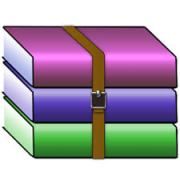$35
KIT205 Data Structures and Algorithms Week 2 Tutorial Solved
KIT205 Data Structures and Algorithms
Week 2 Tutorial
Creating a new project
We will be using Microsoft Visual Studio in this unit. You should follow the instructions below when creating a new project.
1. Start Microsoft Visual Studio.
2. Choose New Project… from the File menu.
3. Select the Visual C++ template and choose Win32 Console Application.
4. Enter a name for the project (e.g. Week2) and check the location at the bottom of the New Project window (you probably want to put it on your network drive in a folder for KIT205). Click OK.
5. When the Win32 Application Wizard starts hit the Next button.
6. Choose Empty Project and uncheck Security Development Lifecycle (SDL), and click
Finish.
7. From the Project menu, choose Add New Item…
8. Choose a new C++ File and give it a name (e.g. week2.c). Make sure that you change the filename extension from .cpp to .c.
9. The new empty file should now be open. Write a simple program (that is, a main method) that displays “hello world” on the console.
10. Run the program without debugging (Ctrl F5) so that the console window isn’t immediately closed.
Creating and Testing a Linked List
• You will need to #include <stdlib.h to be able to use NULL
• If you declare your list as: List my_list = new_list(); you will need to pass &my_list as the first parameter to the other list functions
• Depending on your project settings, you may need to use scanf_s, instead of scanf (check online for more info)
Next we are going to get a linked list up and running. You may find some of the instructions a little light on detail; that is deliberate. If you need extra help, ask your tutor – but try and work it out for yourself first. J
11. Add the linked list code from the lectures. The struct, typedef and function prototypes should go in a new header file called list.h and the function implementations should go in a new source file called list.c.
12. Test the linked list by modifying your main function so that it creates a list by adding some ints (insert_at_front) and then printing the list (print_list).
13. Test the other functions (insert_in_order, delete_from_list, destroy) as well.
Testing Infrastructure
In this unit we will be doing a lot of console-based testing. The following steps will make a start on setting up some testing code (either comment your existing code, or create a new project before continuing).
14. Modify your main function (e.g. week2.c) so that you:
a. Create a List
b. Declare an int for storing input
c. scanf into the int
d. start a while loop that continues until your int has the value 0
e. inside the while loop
i. add the int to your list
ii. scanf a new int
f. destroy the list
15. Test the above version
16. Now modify your main to use a simple menu for selecting functions. The new main should:
a. Create a List called my_list
b. Create an int called quit to that tells the program when to stop and give it the value 0 (false)
c. Start a while loop that exits if quit is true (while (!quit){})
d. inside the while loop
i. Create an int called option
ii. Print a prompt and scanf into option
iii. if option has the value 0, set quit to 1 iv. if option has the value 1, call a new function called option_insert(&my_list)
v. if option has the value 2, call a new function called option_delete(&my_list)
vi. if option has the value 3, call a new function called option_print(&my_list)
e. destroy the list
17. Create the option_insert, option_delete,and option_print in the same file as main and add/copy code to manipulate the list using your list functions (e.g.
option_insert will read an int and then call insert_at_front)
18. Test the new version
If you have time…
19. Add a list function called reverse that takes a list and returns a new list that is the reverse of the given list
20. Add a list function called merge that takes two ordered lists as parameters and creates a merged list that is also ordered
a. See if you can do it without using insert_in_order or nested loops



![CS1550-Project 4- File System Implementation[1] Solved](https://media.sellfy.store/images/MJ82GhoW/6JGs/zip.jpg?w=180)